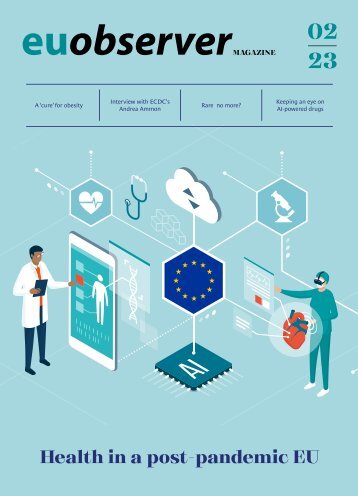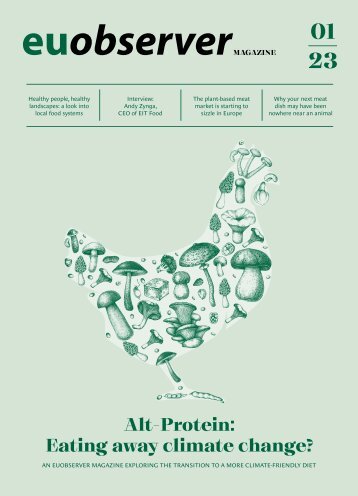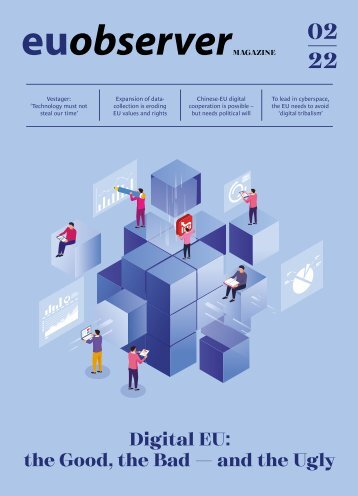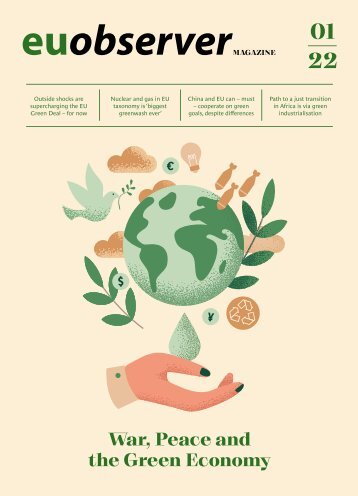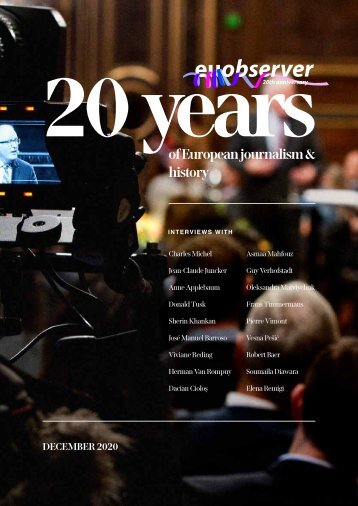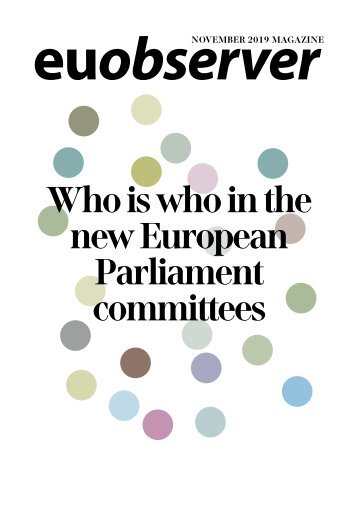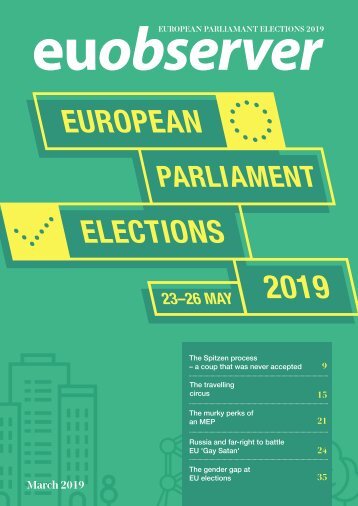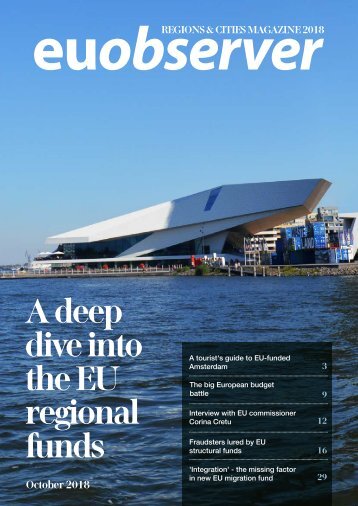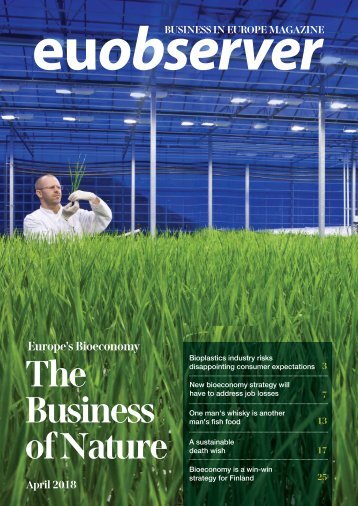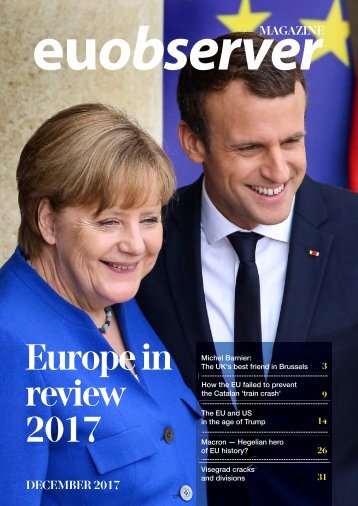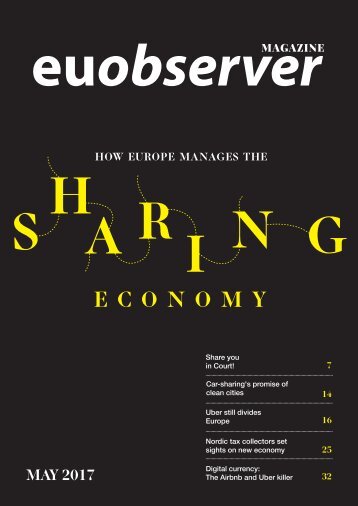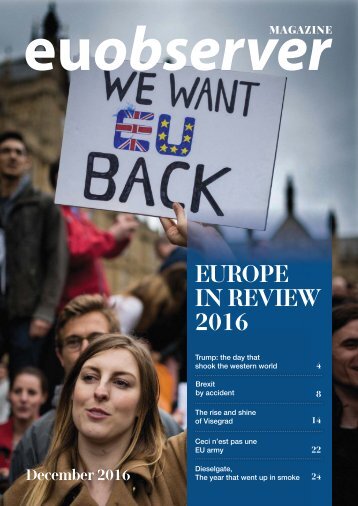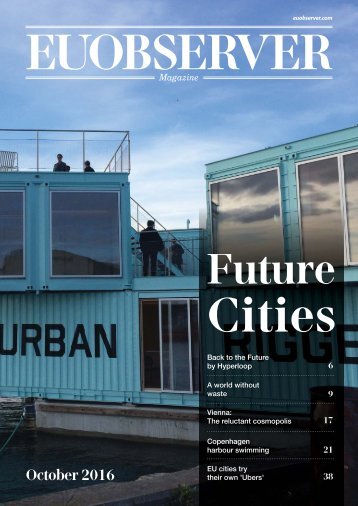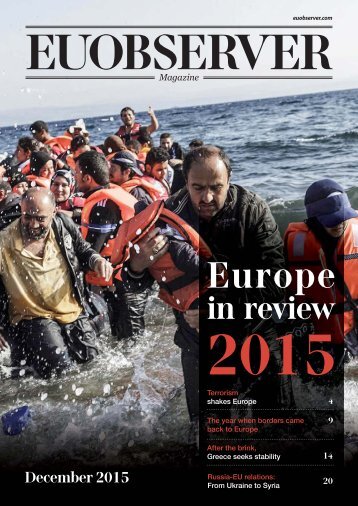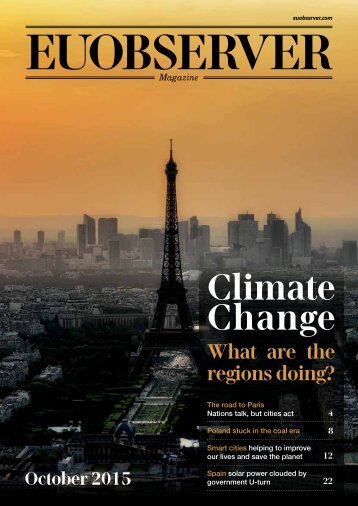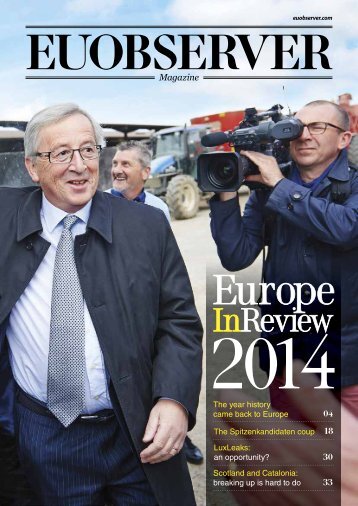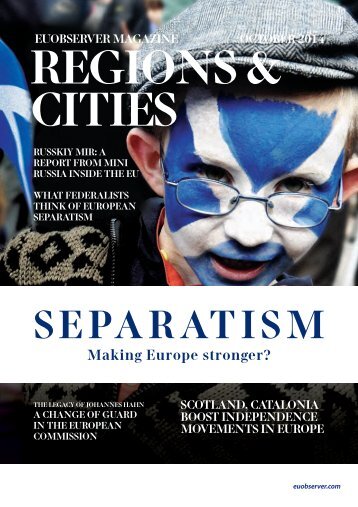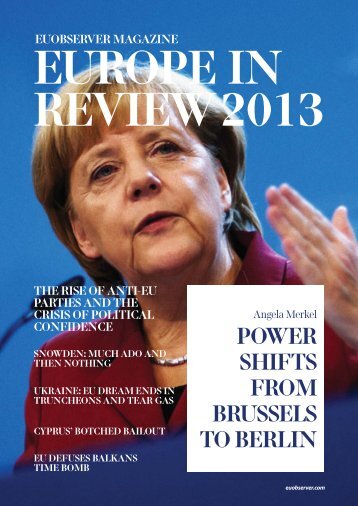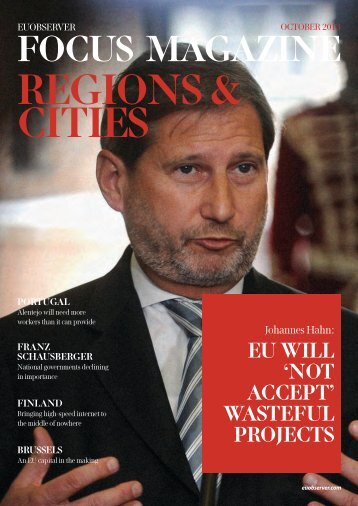Regions & Cities 2013: Cohesion Policy and Regional Aid
- Text
- Enlargement
- Finland
- Regions
- Portugal
- Artic
- Hahn
- Aid
- Policy
- Regions
- Cities
- Brussels
12 OCTOBER
12 OCTOBER 2013 REGIONS & CITIES
ARCTIC REGION TO SEE GREATER FOCUS IN EU AID pROjECTS A groundbreaking trip by a container ship from China to Rotterdam was yet another reminder that the Arctic region is slowly being opened up. By: Honor Mahony Photo: Silje Bergum Kinsten/norden.org I n September this year, a container ship for the first time completed a trip from China to Rotterdam through the Russian Arctic. The captain docked in the Dutch port after a month of sailing and in the knowledge that his journey was around 5,000km shorter than if he had gone the traditional Suez Canal route. The groundbreaking trip was yet another reminder that the Arctic region, due to melting ice, is slowly being opened up. The effects of this can be seen geopolitically as the nations in and touching the Arctic circle increasingly seek to regulate, monitor and measure the growing economic interest in the region. The EU has been seeking for several years to get onto the Arctic Council, the intergovernmental body which oversees the region. China, which was recently accepted onto the Council, has become a major investor in the area. But interest in the Arctic is manifesting itself at smaller, regional levels too. EU AID The Northern Periphery Programme (NPP), a group of EU and non-EU member states which have clubbed together to get EU regional aid, is for the first time seeking to include the Arctic region in the already large territory which it covers. Jim Millard, steering reflections on possible programmes to benefit from EU aid in 2014- 2020, said the “wilderness of the Arctic has not remained intact this long due to strong legislation, but rather because of its remoteness, inaccessibility and harsh climatic conditions of this region.” “These conditions are now changing,” he told an audience at an “Arctic Dimension” seminar hosted by the Norwegian authorities in September. The issue now is “how best to accommodate the emerging Arctic dimension and challenges affecting the programme area,” said Millard. Involving indigenous people, tackling the effects of climate change and growth in economic development are considered among the most important priorities. But Millard noted that because it is sparsely populated and dominated by microbusinesses, the area faces the extra barrier of lacking the “critical mass” for EU-funded programmes. There is also a more general problem - a lack of knowledge about the Arctic. An ARCTIC THINk TANk? Countries and regions already involved in the NPP are considering setting up an Arctic think tank or observation body to collate studies and expertise. Jose Palma Andres, from the regional unit in the European Commission, said he “welcomed” the emphasis on the Arctic. He also indicated that projects involving the Arctic region will have a sympathetic ear in the commission, as the region’s problems are in line with the thematic goals (such as on renewable energy) which projects have to aim for in order to get the green light from Brussels. But while the emphasis at the Norwegian seminar was on regional co-operation, an official from the foreign ministry of Russia - which jealously guards its role in the Arctic - reminded participants that, politically, the buck stops with member states. The proposal for a think tank was “a very interesting point,” said Igor Kapyrin. But it is something that should first be proposed to the Arctic Council, he added.. OCTOBER 2013 REGIONS & CITIES 13
- Page 1 and 2: EUOBSERVER OCTOBER 2013 FOCUS MAGAZ
- Page 3 and 4: OCTOBER 2013 REGIONS & CITIES 3 Eur
- Page 5 and 6: A s Anne-Mari Leppinen tells it, he
- Page 7 and 8: Assembly of European Regions Youth
- Page 9 and 10: OCTOBER 2013 REGIONS & CITIES 9
- Page 11: Some general facts about theRepubli
- Page 15 and 16: But urban planners are working - al
- Page 17 and 18: EU COHESION pOLICy: ‘No MORE BUSI
- Page 19 and 20: The Regional Research and Innovatio
Inappropriate
Loading...
Mail this publication
Loading...
Embed
Loading...
